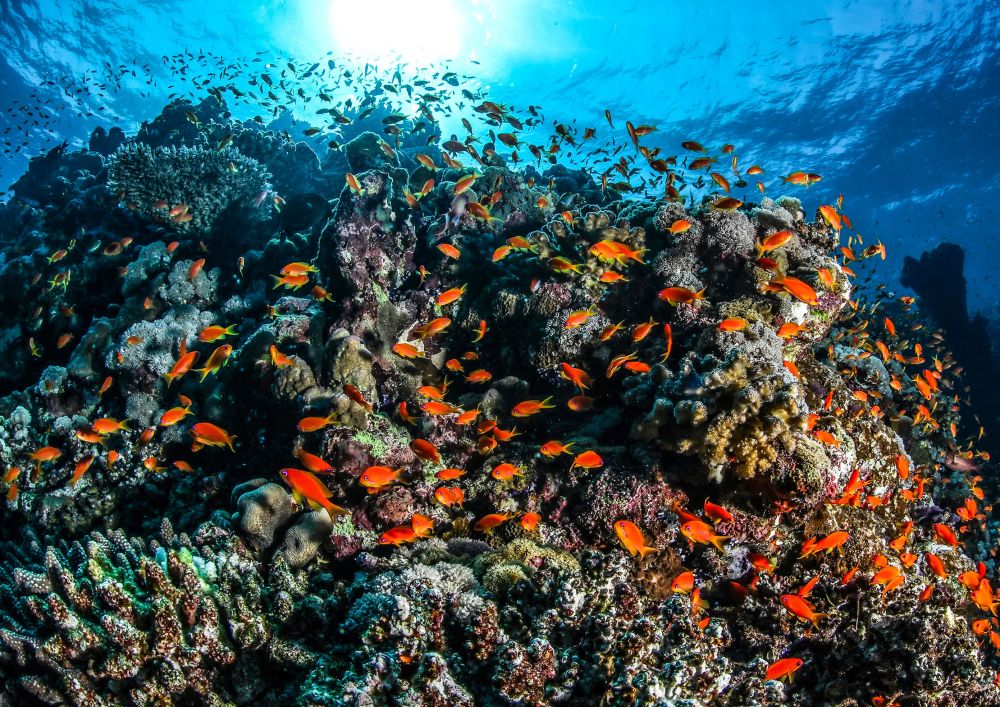
In nature the struggle for territorial and reproductive dominance is an ethological aspect present in many animal species: a behavior affecting also the marine fauna, although with a lower frequency and greater difficulty of observation.
At certain particular times of the year, if you are lucky, while diving in the Asian, Austral regions and in the Red Sea, it is possible to observe the struggle between males of Pseudanthias (a genus that counts numerous species) for the territorial predominance and the possession of the harem. This behavior represents a real show! Anthias and Pseudanthias, although hard to believe, are members of the groupers family (Serranidae).

Indonesia, Lembeh Strait.

Some of the largest species of bony fish belong to this family, but also some of the smallest species ever. Most of the Anthias, belonging to the subfamily of the Anthiadinae, are small and colorful and inhabit coral reefs in groups that sometimes exceed even thousands of specimens.
They survive by catching the food transported by ocean currents. The most common group is precisely that of the genus Pseudanthias.
The name is borrowed from an initial error for which a number of similar species were incorrectly inserted in the genus Anthias, and thereafter relocated in the genus Pseudanthias.
The sight of a school swimming over a colorful coral reef may seem at first an idyllic scene. In reality, these groups conduct a particularly “tumultuous” life. Contrary to many other species where there is no difference in “social status”, members of a Pseudanthias group constantly compete for a position in the hierarchical order inside it.

These groups are mainly composed of females and non-territorial males that are found in the bottom of the social chain; other males, instead, normally one every eight females, are dominant and struggle for territory and for the defense of their harems.
Also within the group of females there is a hierarchy and, if the territorial male dies, the dominant female in the harem changes sex and in a short time (about two weeks) becomes the new dominant male of that group, and therefore of that territory. In the pictures published in this article, the males are caught in the act of holding each other with their mouths, which like a bite, delivering each other some yank, but apparently without any damage. At other times, you may see them swimming side by side, rubbing each other.
Even in this case it is easy to fall into a misunderstanding: similar images lead to think of a mating scene, such as for example occurs between the magnificent mandarin fish (Synchiropus splendidus) – photo below – where the male approaches as in a dance to the female, and then they perform in a repeated manner very rapid vertical ascents, side by side, almost as if they were a single body, and then, after the rapid fertilization of the eggs, each fall on the two different sides.
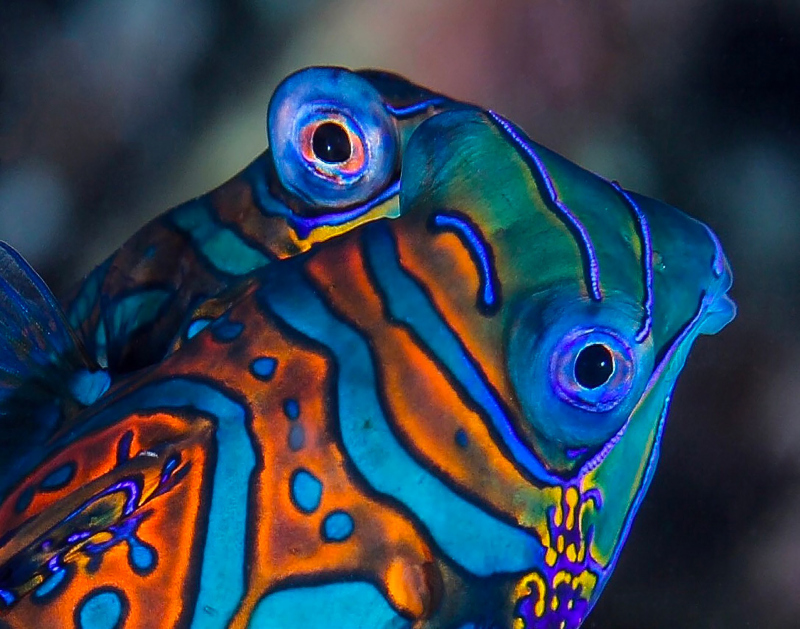
In the case of the Pseudanthias, instead, it is to maintain the dominant position that the larger males and females load, chase, and sometimes rub themselves with those belonging to the group closest to them at that time.
The struggle between two territorial males can last long, several tens of minutes, ending only with the departure of one of the two contenders.
During these “battles” the skirmishes are repeated, as in a continuous replay, with the same poses and the same attacks, in a dance without music, elegant and colorful like the colorful patterning and fins, crossing and composing themselves in changing shapes.
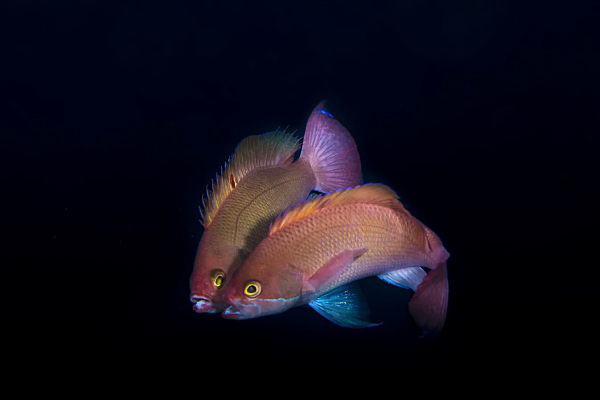
In some phases they swim side by side, rubbing against each other. Tulamben, island of Bali 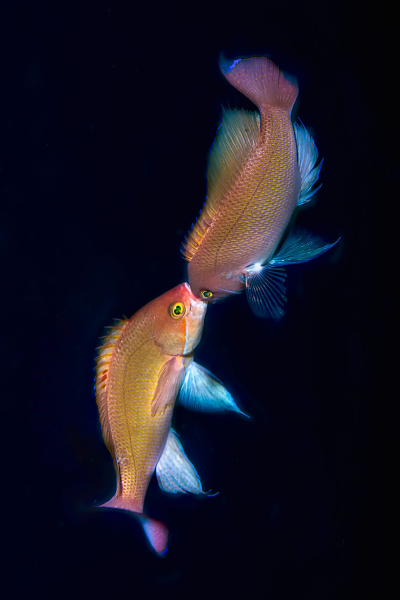
It often seems like a dance without music, where the colors of the splendid and polychrome patterning unite 
During these battles the scenes repeat, like a continuous replay 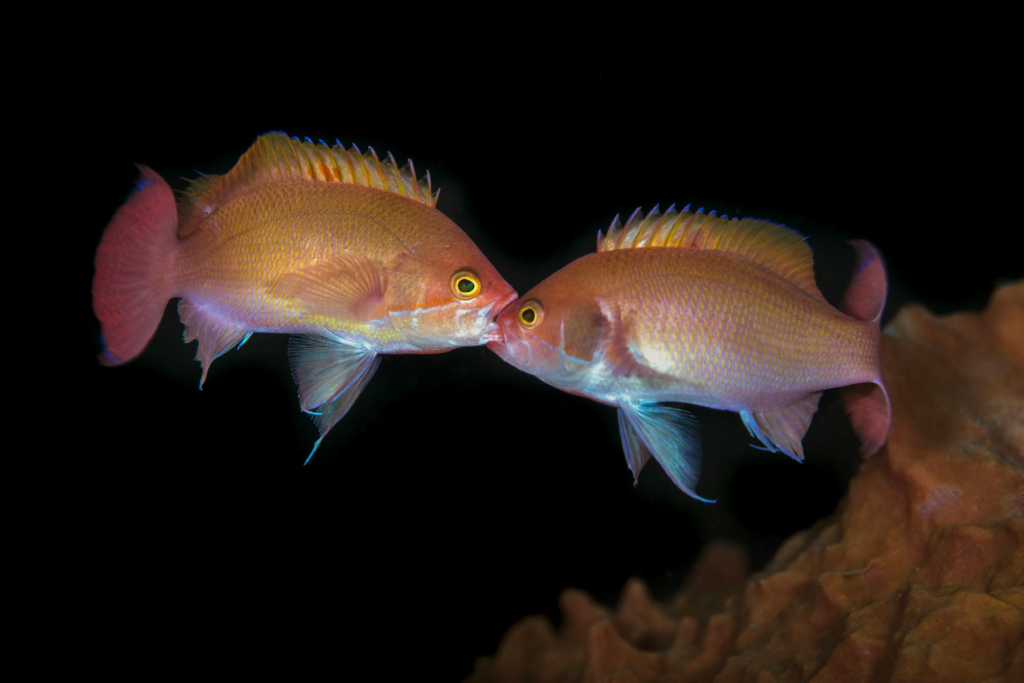
Two dominant males of Pseudanthias hypselosoma fighting for territory and harem. Tulamben, island of Bali
WORDS and PICTURES by Franco Tulli

















